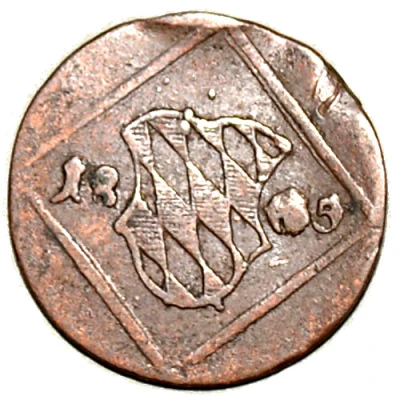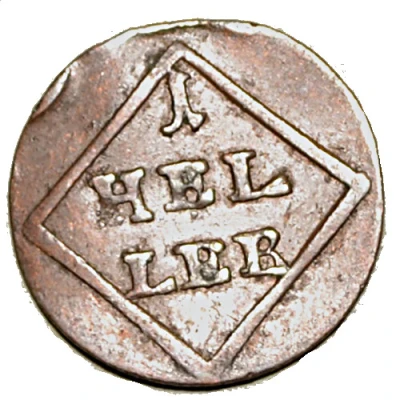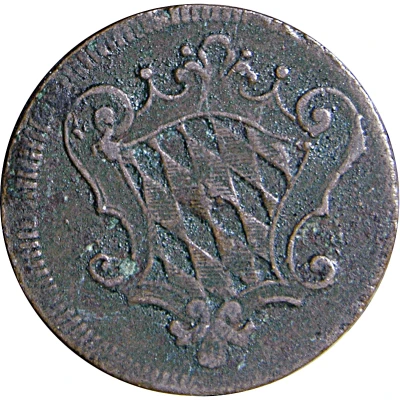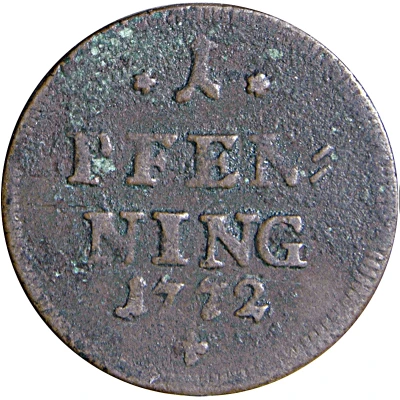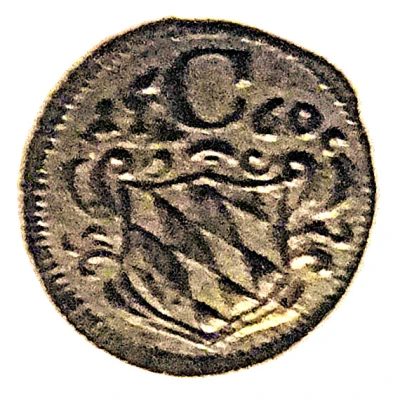
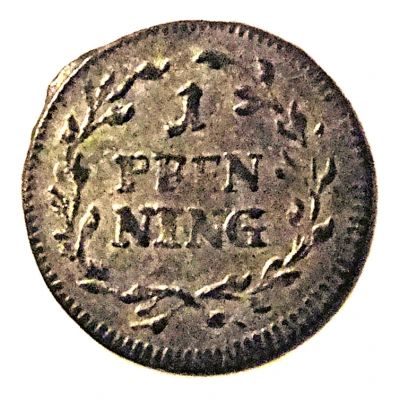

1 Pfenning - Maximilian III Joseph
| Billon | - | 12 mm |
| Issuer | Electorate of Bavaria (German States) |
|---|---|
| Prince elector | Maximilian III Joseph (1745-1777) |
| Type | Standard circulation coin |
| Years | 1759-1761 |
| Value | 1 Pfennig (1⁄576) |
| Currency | Conventionsthaler (1753-1806) |
| Composition | Billon |
| Diameter | 12 mm |
| Shape | Round |
| Orientation | Medal alignment ↑↑ |
| Demonetized | Yes |
| Updated | 2024-10-04 |
| Numista | N#98036 |
|---|---|
| Rarity index | 95% |
Reverse
Three line inscription with denomination within laurel wreath.
Script: Latin
Lettering:
1
PFEN
NING
Comment
Hahn# 285Interesting fact
The 1 Pfenning coin from the Electorate of Bavaria, minted during the reign of Maximilian III Joseph (1759-1761), is interesting because it was made of Billon, a metal alloy that was commonly used for coins in Europe during that time period. Billon is a mixture of copper and silver, and it was valued for its durability and resistance to wear and tear. The use of Billon in the production of coins was a cost-effective way for governments to mint coins, as it was less expensive than using pure silver or gold. Despite its relatively low value, the 1 Pfenning coin was an important part of the economy in the German States during the 18th century, and it remains a popular collector's item among numismatists today.
